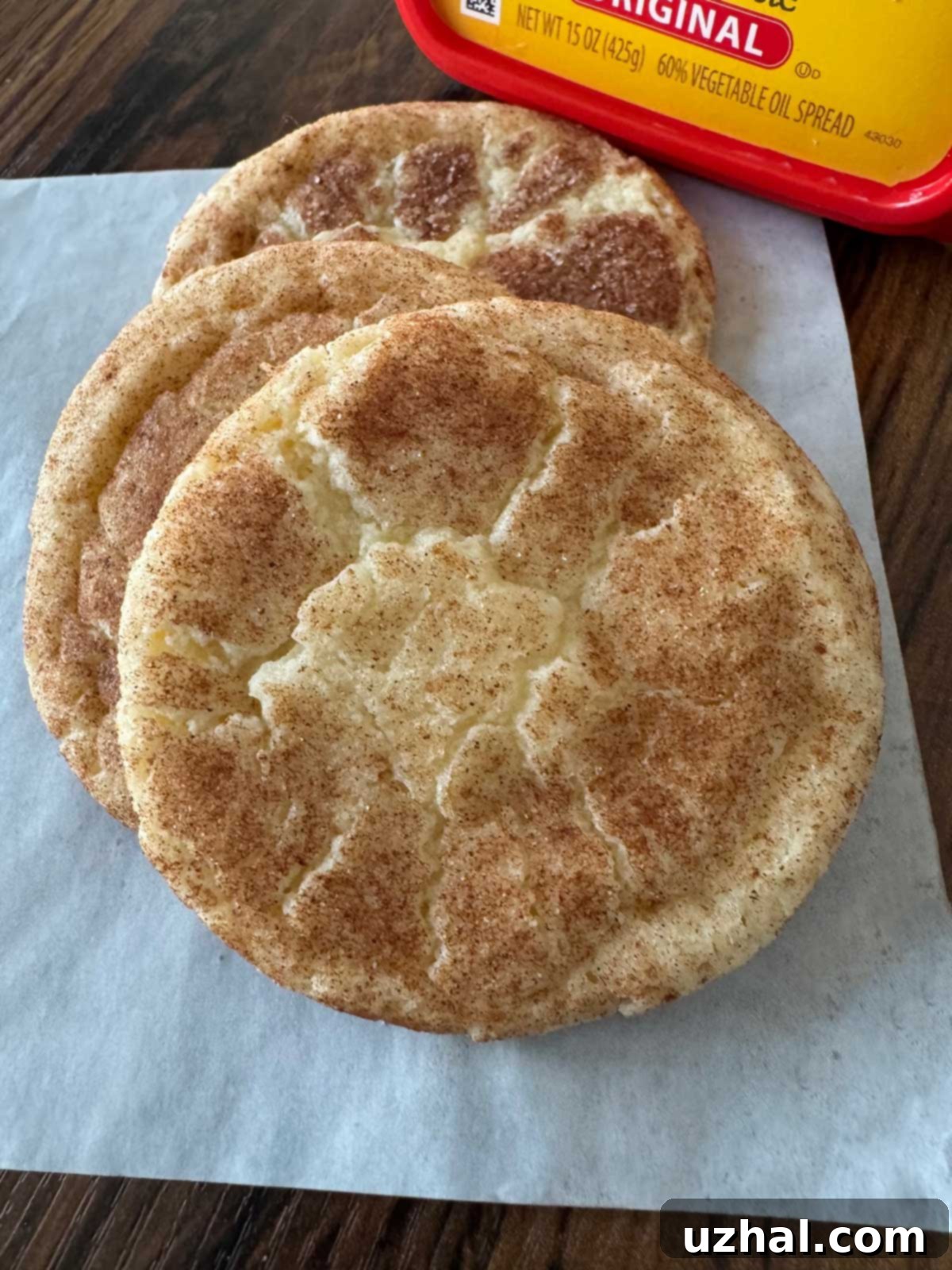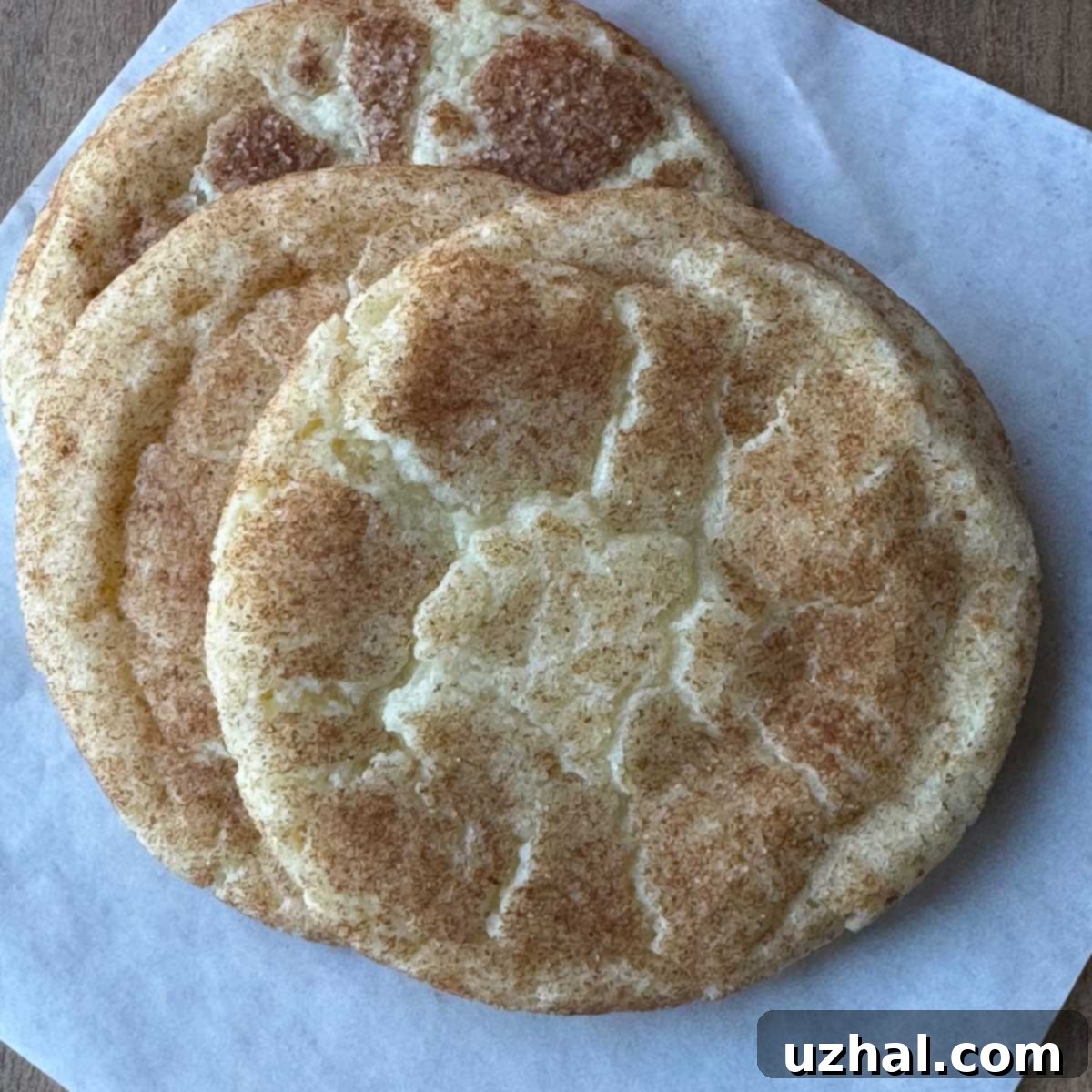The Ultimate Guide to Margarine Snickerdoodles: Secrets for Incredibly Soft & Chewy Cookies
For many, the Snickerdoodle is more than just a cookie; it’s a nostalgic treat that brings back memories of childhood kitchens and comforting flavors. Its signature tangy taste, combined with a sweet cinnamon-sugar coating, makes it a timeless favorite. While butter is traditionally lauded as the go-to fat for most baking endeavors, a fascinating debate often arises when it comes to Snickerdoodles: could margarine actually be the secret ingredient for achieving that legendary soft, puffy, and impossibly chewy texture? With an overwhelming array of margarines available on grocery store shelves today, navigating the options can be confusing. Is it better to go all-in with margarine, as some expert bakers suggest, or to find a harmonious balance by combining it with butter or shortening? And what exactly does margarine bring to the baking table that butter doesn’t?
Some people say margarine is the secret ingredient in Snickerdoodles, but with so many different types of margarine now it’s hard to know exactly which one to use. Plus is it best to use all margarine like I did for this cookie or use half margarine and halve butter? And why even bother with margarine at all?
Why Use Margarine in Snickerdoodles? Unlocking Unparalleled Softness
The primary reason for incorporating margarine into a Snickerdoodle recipe is its profound impact on the cookie’s texture. Margarine, typically made from vegetable oils, water, and emulsifiers, behaves differently than butter due to its unique fat composition and water content. This difference translates directly into a softer, more pliable, and often puffier cookie. When you bake with margarine, the oils contribute to a particularly tender crumb, creating a mouthfeel that is distinct from butter-only cookies. As seen in many successful baking experiments, margarine helps create Snickerdoodles that are wonderfully soft and slightly cakey, offering a delightful chewiness that many cookie enthusiasts adore. However, it’s important to acknowledge that modern margarines, often relying on palm oil or other vegetable oils, may lack the complex, rich dairy flavor that butter provides. Some palates are more sensitive to this subtle taste difference, sometimes described as a faint ‘palm oil’ note. While this isn’t necessarily a negative flavor, it’s undeniably different from butter. The key is to embrace margarine for its textural advantages, knowing that flavor can be enhanced through other means.

Choosing the Best Margarine for Your Baking Adventures
The market is saturated with margarines claiming to be “perfect for baking,” but the truth is, suitability largely depends on what you’re trying to achieve. When selecting margarine for your Snickerdoodles or any other baked good, paying attention to its form and fat content is crucial. **Stick margarines** are generally superior for baking applications compared to tub spreads. Brands like Country Crock baking sticks or Earth Balance Buttery Sticks are excellent choices because they contain less water and a higher fat percentage, making them a more direct 1:1 replacement for butter. Their firmer consistency ensures they cream properly with sugar, which is essential for incorporating air and developing the cookie’s structure and rise. This leads to a more predictable and consistent result. You can certainly experiment with various **tub margarines**, but be aware that their higher water content can alter the cookie’s texture, potentially leading to a cakier or drier result, or a dough that’s too soft to manage easily. If you opt for a tub margarine, look for those with higher fat content (often labeled as ‘80% vegetable oil spread’ or similar) and consider combining it with a pure fat like shortening. The lower moisture and extra fat in shortening can effectively compensate for the higher water content in tub margarines, ensuring your cookies maintain a desirable texture. Interestingly, some bakers find certain tub margarines offer a slightly better flavor profile than their stick counterparts, making personal preference and experimentation key to discovering your favorite.
The Power of Blending Fats: Half Margarine and Half Butter or Shortening
While using all margarine sticks can undeniably produce wonderfully soft Snickerdoodles, many experienced bakers find that a strategic blend of fats yields the most balanced and flavorful results. I strongly recommend a combination of half margarine and half butter. This pairing allows you to harness margarine’s unique textural benefits – its ability to create an incredibly soft and puffy crumb – while still enjoying the rich, complex dairy notes and slightly crisp edge that only butter can provide. For those seeking an even more tender, almost cake-like Snickerdoodle, replacing butter with **shortening** is a game-changer. Shortening, being a pure fat with no water content, inhibits gluten development more effectively than butter, resulting in a remarkably melt-in-your-mouth texture. My personal favorite combination for Snickerdoodles is half **Olivio** brand margarine, which I find offers a pleasant flavor and excellent softness, paired with half Spectrum shortening. If you appreciate a pronounced buttery flavor without the need for additional extracts, butter-flavored Crisco can be an option. However, I often find its flavor a bit too strong and prefer the control of using a neutral or plain shortening, allowing me to add my own high-quality butter flavoring for a customized taste.
Enhancing Flavor: The Role of Butter Flavoring
Given that margarine, especially some of the more neutral-flavored varieties, doesn’t inherently possess the rich, nuanced taste of traditional butter, incorporating a good quality butter flavoring can make a significant difference in your Snickerdoodles. While artificial butter flavoring might not be a common ingredient in every cookie recipe, it truly shines in Snickerdoodles, effectively bridging the flavor gap and enhancing the overall cookie experience without overpowering its distinct cinnamon-sugar profile. For the best results, I recommend using clear butter flavorings from trusted brands. Two excellent choices are Olive Nation and Happy Home clear butter flavorings. Their clear formulation ensures that your light-colored Snickerdoodle dough remains pristine, while delivering a pleasant, authentic butter essence that is potent enough to make a difference yet never becomes artificial or cloying. This simple addition can elevate your margarine Snickerdoodles to a new level of deliciousness.
The Flour Factor: White Lily or a Softer Wheat Flour for Texture
Beyond your choice of fat, the type of flour you use significantly influences the final texture of your Snickerdoodles. For achieving that desirable ultra-soft and tender crumb, a soft wheat flour like **White Lily all-purpose flour** is an invaluable secret weapon. Soft wheat flours have a lower protein content compared to standard all-purpose flours, which means they produce less gluten when mixed. Less gluten development results in a more delicate, cake-like texture rather than a chewier or denser cookie. If White Lily isn’t readily available in your area, you can mimic a similar effect by creating your own blend: try replacing a small portion of your regular all-purpose flour with cake flour, which is also a low-protein flour. Regardless of the flour type, always remember to measure it by **weight** using a kitchen scale rather than by volume. This precision is vital for consistent baking results, as scooping flour can lead to significant variations in quantity and, consequently, in the cookie’s final texture.
Essential Baking Tips for Perfect Snickerdoodles
Beyond the specific ingredients, a few general baking techniques can further enhance your Snickerdoodle success:
- **Creaming Fats and Sugar:** Ensure your margarine and butter/shortening are at a good room temperature. Creaming them with sugar until light and fluffy is crucial for incorporating air, which contributes to the cookies’ puffy texture.
- **Don’t Overmix:** Once you add the dry ingredients, mix only until just combined. Overmixing develops gluten, leading to tougher cookies.
- **Chilling the Dough:** Chilling the dough is non-negotiable for Snickerdoodles. It solidifies the fats, preventing excessive spreading during baking, and allows the flavors to meld beautifully. Aim for at least 1-2 hours of chilling, or even overnight for best results.
- **Even Baking:** Use parchment paper-lined baking sheets for even heat distribution and easy cleanup. Space cookies adequately to prevent them from merging.
- **Watch the Oven:** Keep a close eye on your cookies during baking. Snickerdoodles are best when just set around the edges but still soft in the center; they will continue to cook slightly on the baking sheet as they cool.
Embracing these nuanced baking strategies, from thoughtfully selecting your fats to understanding the impact of flour and mastering key techniques, opens up a world of experimentation and delightful discoveries. Each small adjustment can profoundly influence the texture and flavor, guiding you toward your ultimate goal: the perfect, irresistibly soft, and flavorful Snickerdoodles. Happy baking!
- Brown Sugar Snickerdoodles
- Roasted Flour Snickerdoodles
- Snickerdoodle Cookie Bark
- Buttermilk Chocolate Bread
- Date Paste Vegan Snickerdoodles
Margarine Snickerdoodle Recipe

Margarine Snickerdoodles
By Anna
Pin Recipe
Equipment
-
Electric Mixer
Ingredients
- ½ cup margarine (Olivio, Earth Balance, Smart Balance) (56 grams, softened at room temperature)
- ½ cup butter or shortening (56 grams of softened butter or 48 grams shortening)
- 1 ½ cups granulated sugar (300 grams)
- 2 large eggs
- 1 teaspoon vanilla extract
- 1 teaspoon good butter flavoring (e.g., Olive Nation or Happy Home clear)
- 2 ¾ cups flour, soft flour like White Lily works well (350 grams, measured by weight for best results)
- 2 tsp. cream of tartar
- 1 tsp. baking soda
- ¼ tsp. salt (or up to ½ teaspoon if using unsalted butter or shortening)
Cinnamon Sugar Coating
- 4 tablespoons granulated sugar
- 4 tsp. ground cinnamon
Instructions
-
Using an electric mixer, beat the softened margarine, butter (or shortening), and granulated sugar together in a large bowl. Cream these ingredients until the mixture is light, fluffy, and noticeably pale in color, usually for about 2-3 minutes. This crucial creaming step incorporates air, which is essential for developing a tender, puffy cookie texture. Next, add the eggs, one at a time, beating for at least 30 seconds after each egg addition to ensure they are fully incorporated and the mixture remains light and aerated. Finally, beat in the vanilla extract and your chosen butter flavoring (if using) to enhance the overall taste profile of the cookies.
-
In a separate medium-sized bowl, thoroughly whisk together all the dry ingredients: the measured flour, salt, cream of tartar, and baking soda. This step is vital to ensure that the leavening agents and seasoning are evenly distributed throughout the dough, preventing pockets of unmixed ingredients. Gradually add this dry mixture to the wet batter, incorporating about one half cup at a time. Stir gently with your mixer on low speed or a spatula until just blended after each addition. Be cautious not to overmix the dough, as overdeveloping the gluten can result in cookies that are tough rather than delightfully soft.
-
Once the cookie dough is fully combined, cover the bowl tightly with plastic wrap and transfer it to the refrigerator. Chill the dough for at least 30-60 minutes, or until it becomes firm enough to easily handle and scoop. Chilling is a critical step for preventing your cookies from spreading too much during baking and also allows the flavors within the dough to deepen and meld. After the initial chilling, scoop out approximately 28 uniform balls of dough (a cookie scoop works perfectly for consistency) and place them onto plates lined with plastic wrap. Return these scooped dough balls to the refrigerator to chill for at least another hour, or until you are completely ready to bake. This secondary chilling ensures optimal texture and helps maintain the cookie’s shape.
-
Preheat your oven to 375 degrees Fahrenheit (190°C). If you are using a convection oven or a toaster oven, which typically bake hotter and more evenly, it’s advisable to reduce the temperature slightly to 350 degrees Fahrenheit (175°C). While the oven preheats, prepare your baking sheets by lining them with parchment paper. This will prevent the cookies from sticking and promote more even baking.
-
In a small, shallow bowl, combine the granulated sugar and ground cinnamon for the signature Snickerdoodle coating. Take each chilled dough ball and roll it thoroughly in this cinnamon-sugar mixture until it is evenly coated on all sides. Place the coated dough balls about 3 inches apart on the prepared parchment-lined baking sheets to allow for adequate spreading during baking. Bake for 12-14 minutes, or until the edges are lightly golden brown and the centers still appear soft and slightly undercooked. The cookies will wonderfully puff up in the oven, creating a delightful cakey texture, and then gradually flatten as they cool. Allow them to cool on the baking sheet for a few minutes to set before carefully transferring them to a wire rack to cool completely.
